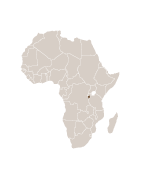Family passion for coffee from the heart of Poland since 2014
2 products


Where is Burundi located ?
A small African country located between Tanzania, the Democratic Republic of Congo and Rwanda. The country is landlocked, hence the harvested coffee must be transported through neighboring countries. The flag is three stars, which represent the three ethnic groups that inhabit the country (Hutu, Tutsi and Twa). The red in the flag stands for the struggle for independence, the green for hope, and the white for peace.
A little history of Coffee
The Kingdom of Burundi (also known as the Kingdom of Urundi) was established in the early 17th century and ruled by a monarch. The king, with the title Mwami, owned most of the land and required a tax on local farmers. European missionaries and explorers arrived in 1856. Burundia gained independence in 1962 The country is inhabited by 3 leading tribes of Hutu (~80%), Tutsi (~20%) and Twa (~1%). Both Hutu and Tutsi speak the same language, share many cultural traits, and the traditional differences are in occupation: Hutus were often farmers, while Tutsis were considered elite cattle owners.
When did coffee come to Burundi?
Coffee was introduced to Burundi in the 1930s by Belgians who brought Arabica coffee seedlings. After independence in 1962, the coffee sector was privately managed for more than a decade, and the quality and quantity of coffee produced during that time slowly deteriorated due to repeated political upheavals. The coffee sector was finally taken over by the state in 1976, with mixed results, and from 1991 to 2008 the government established an auction system. In 2008, the World Bank privatized the coffee sector, allowing private companies and cooperatives to own the washing and drying stations that had previously belonged to the state. Today, coffee for Burundi's economy is the leading export commodity, surpassing even gold in its share. Currently, a minimum price for coffee berries is set by the government to protect small farmers from market fluctuations.
Burundi Coffee Cultivation
Burundi's topography, like that of neighboring Rwanda, is very hilly, which is conducive to the growth of coffee trees. Most of the arabica coffee crop is locatedat an altitude of 1,200-2,000 meters above sea level, and harvesting takes place from March to July. Coffee cultivation is concentrated in the northern and central provinces. Coffee from Burundi undergoing the washing process is also unique in that it is often "double fermented"/"double washed," which produces a uniquely coffee flavor. The coffee berry is then stripped of its pulp and dry-fermented for 12-24 hours in a tank, after which it is washed in several channels (with different coffees going to different tanks depending on density), and finally wet-fermented for another 12 hours, before being placed on African beds for sorting and drying for 10 to 20 days, depending on the weather.
What does coffee from Burundi taste like?
Coffee from Burundi is hard to beat, offering bright notes of stone fruit, juicy acidity and a silky body.







































